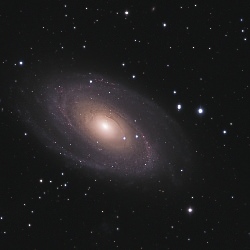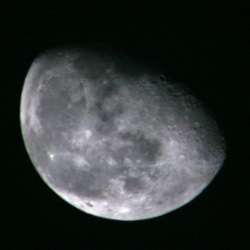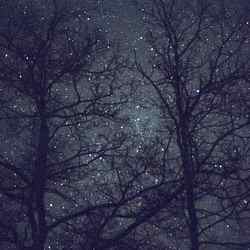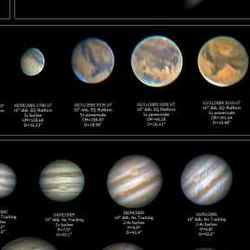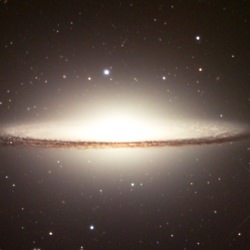
The Sombrero Galaxy by Adam Block/Morris Wade/NOAO/AURA/NSF
Located 28 million light years from our planet and rushing away at over 700 miles a second, the Sombrero Galaxy has some impressive statistics: it spans over 50,000 light years, it contains the mass of 800 billion suns and is surrounded by over 2 thousand globular clusters – nearly ten times as many as our own Milky Way. The glowing central region is home to a monster producing a tremendous amount of X-rays. Most astronomers believe it’s an enormous black hole over a billion times more massive than our sun.
The prominent dust lane that cuts horizontally across the edge coupled with the bulge near the center gives the galaxy a hat-like appearance, thus the common name of Sombrero. Slightly too faint to be seen by naked eye, the Sombrero, which is located in the constellation of Virgo, appears to be approximately 1/5 as large as the Moon from our vantage point on Earth.
This picture was taken by Adam Block and Morris Wade using a 20 inch, f/8 RCOS Ritchey-Chretien telescope and a three mega-pixel SBIG astronomical camera at the Kitt Peak National Observatory Visitor Center outside of Tucson, Arizona. The observatory operates an Advanced Observing Program most nights of the year where interested visitors regardless of previous experience can pre-arrange to take amazing astronomical photos like this. This image was produced after two and one half hours of total exposure. Post production processing included two iterations of deconvolution, which increases sharpness, and use of DDP, a digital enhancement technique which helps display both the very faint and very bright parts of the image simultaneously.
Do you have photos you’d like to share? Post them to the Universe Today astrophotography forum or email them, and we might feature one in Universe Today.
Written by R. Jay GaBany


